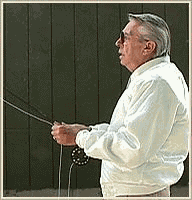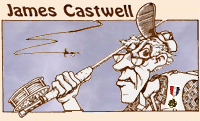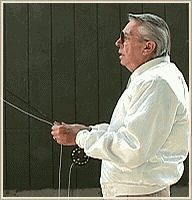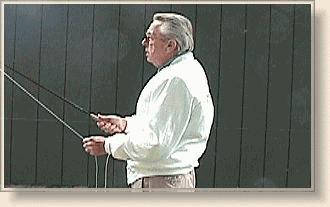|
I get email on a lot of subjects, the double-haul is one of them. The
problem seems to be no one learns it until they have an urgent need
for it and then it is almost too late. The 'DH' needs to be learned and
practiced and used for some time before it becomes an incorporated
casting tool. Many of my past columns have recommended you learn
it however you can, book, video, fly shop, on here or at a class or school.
I have tried to convince you that the 'DH' is not just for long line casting,
but can equalize the work between the hands in normal fly-casting situations
and give you far more control over your line due to the increased line speed
generated. There are just too many benefits to attempt to describe.
There was a recent Bulletin Board question about videos for learning the
'DH'. I've not found any of great value for various reasons. They mostly
show a lot of line and not much of the hand or arm mechanics. I've tried
to do a better job with the following pictures. These were not shot in one
continuous sequence, as I do not have a camera that will do that, (yet). Until
that time, try to get some good out of these. I did these for you, at least watch
them, and no snide comments please as to who is the 'ugly-old-guy.' I did the
casting and the Lady Fisher shot the photos! (I'm just a reformed bait-fisher
who needed the 'talent-fee' and worked for a small lunch.)
These pictures are not necessarily supposed to teach you how to do the 'DH,'
just to give you a better idea what I have been talking about and perhaps tempt
you to learn it for yourself. Good luck, your arm will be sore, you will probably
get a few blisters, your thumb will probably ache, and your shoulder will never
be the same. But, what the heck, that happens when you mow the grass and
this is a lot more fun. Learning it will improve your casting.
This is the 'DH' in 'slow-motion.' This is about what it should look
like when you are using about 25 or 30 feet of line. Notice the casting hand
does not go very far back nor forward. Once loaded with the increased
mass-weight of the line, any reasonable fly-rod will deliver the line in a
very controlled loop shape.

|









